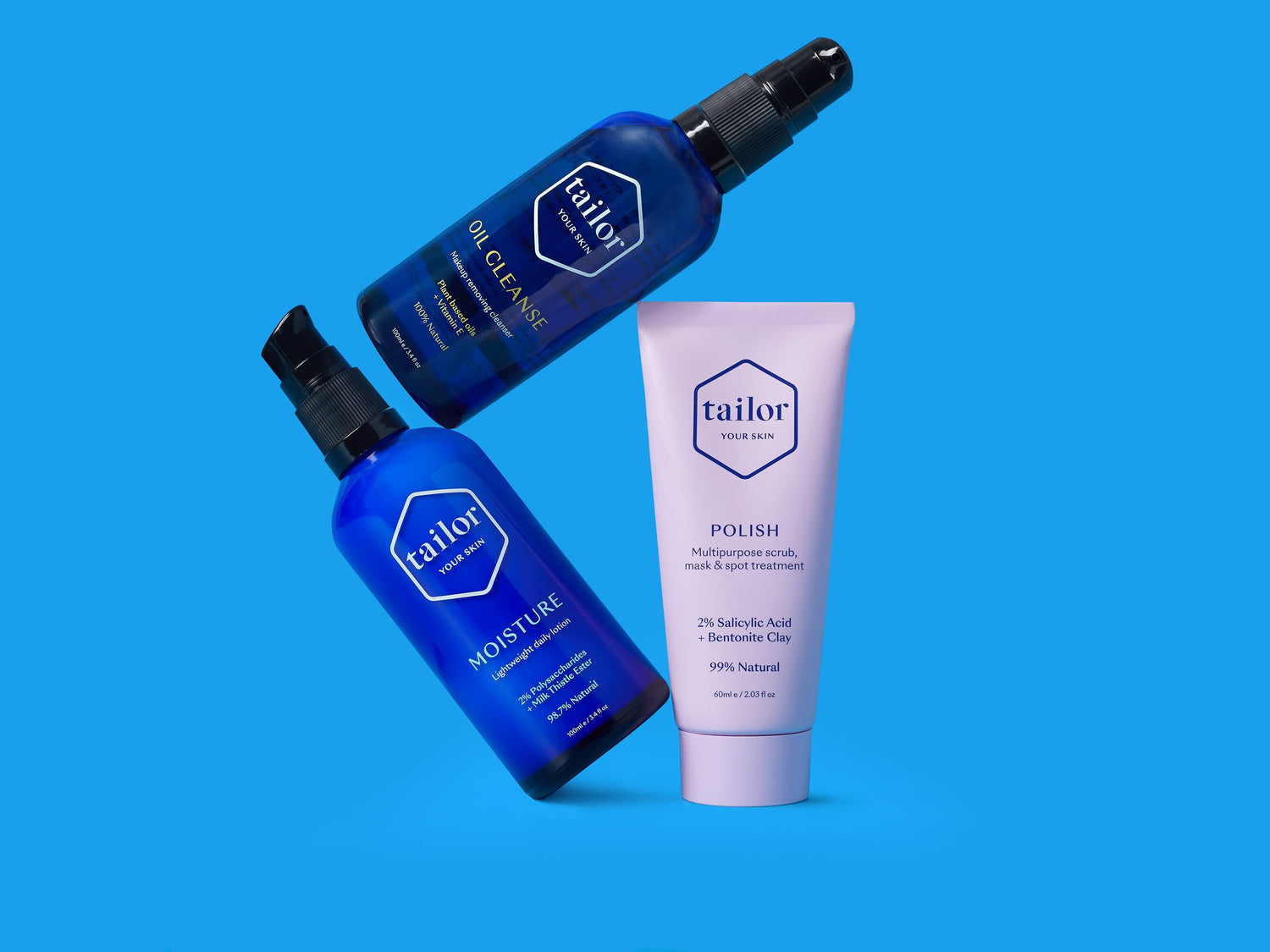What is Comedogenic vs Non-Comedogenic skincare?
You might be on the hunt for new skincare that is ‘non-comedogenic’, after your favourite skin guru told you that comedogenic ingredients are the cause of your breakouts. Unfortunately for you, this buzzword is an unregulated term that any brand can put on the product - without having to prove it won’t actually clog your pores and cause you to break out. As with all greenwashing marketing, it’s easy to see these positive buzzwords you’ve heard all about, and assume the product will be good for your skin. But beware - this is how you get fooled. Learn what comedogenic ingredients really mean for your skin, what to look out for and what to avoid.

What does Comedogenic mean?
In deciding whether a product is comedogenic or not, its likelihood to clog your pores and possibly cause acne is considered. They cause comedones, more commonly known as whitehead and blackheads (aka your unwanted visitors). These occur when hair follicles become blocked with excess oil (sebum), dead skin cells, and other impurities. Comedogenic substances have a higher tendency to contribute to this pore-clogging process (thanks, but no thanks), leading to blemishes.
On the flip side, non-comedogenic products are formulated with ingredients that are less likely to block pores. These products are specifically designed to allow the skin to breathe, reducing the risk of acne and promoting healthier skin (now we’re talking!).
Will all Comedogenic ingredients clog my pores?
The simple answer is no, but let’s break it down together. Comedogenicity is determined by the properties of the ingredients in skincare. Certain ingredients have a higher likelihood of clogging pores, while others are less likely to do so. However, it's important to note that comedogenicity can vary from person to person, as everyone's skin is unique. A substance that is comedogenic for one person may not be for another. Comedogenicity is typically measured on a scale from 0 to 5, with 0 being non-comedogenic and 5 being highly comedogenic. Sometimes you just have to go in with the best intentions (of the scale). Let’s take a look:
|
0 |
Non-comedogenic |
The substance is unlikely to clog pores |
|
1 |
Slightly comedogenic |
The substance has a low likelihood of clogging pores or causing breakouts, particularly for people with acne-prone or sensitive skin. |
|
2 |
Moderately comedogenic |
The substance has a moderate likelihood of clogging pores or breakouts, particularly for people with acne-prone or sensitive skin. |
|
3 |
Comedogenic |
The substance is likely to clog pores or cause breakouts for many people, especially those with oily or breakout-prone skin. |
|
4 |
Highly comedogenic |
The substance has a high likelihood of clogging pores or causing acne for most individuals, including those with non-breakout-prone skin. |
|
5 |
Extreme comedogenic |
The substance is highly likely to clog pores or cause acne breakouts even in individuals with non-breakout-prone skin. |
It’s important to note that the comedogenic scale is not an exact science, and individual reactions to specific ingredients can vary, but it's our best guide to go off to make an informed conclusion. Some people may experience breakouts from substances rated lower on the scale, while others may tolerate substances rated higher.

Are Tailor Skincare products Non-Comedogenic?
Don’t worry, Tailor is here to be transparent with our products' comedogenic rating. We don’t do any greenwash marketing around here.
|
Tailor Product |
Oils/Butters |
Table Ranking |
|
Sunflower Oil |
0 |
|
|
Rosehip Oil |
1 |
|
|
Shea Butter |
0 |
|
|
Jojoba Seed Oil |
2 |
|
|
Olive Squalane |
1 |
*Oil Cleanse: The only exception is coconut oil, which is 4 on the scale, as it is dense and is known to be pore-clogging if used as an emollient, for example in a moisturiser. Therefore, Oil Cleanse could be comedogenic if left on the skin, but the product is designed to be rinsed off and/or followed with a second cleanser as the first step in a cleansing routine. Double cleansing would significantly reduce the chances of having a comedogenic effect.
*Moisture: The only exception is cocoa butter, which is a 4 on the scale but used at <0.5%. Overall, Moisture contains oils with a low comedogenic rating, and contains less than 0.5% of butters with a moderate comedogenic rating.
Should I avoid Comedogenic ingredients?
If you have concerns or are unsure about specific ingredients or products for your skin here’s two recommendations:
- Consult with a dermatologist
- Conduct patch tests, the best place to do this is the inside of your upper arm, as this area of skin is the most sensitive. Therefore, it will help determine how your skin will react.

